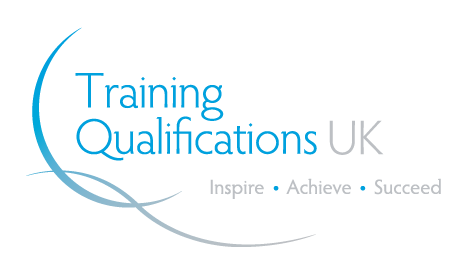Within our classrooms, nurseries, daycare centres and our homes, we strive to achieve the same goal – to ensure the very best for our children.
With the same objective in mind, we naturally lay out our essential expectations – that our children receive the very best support, education, understanding and care that they deserve.
We want to allow them to thrive to the best of their potential in their early years and educational settings, and, ultimately, develop into independent and successful adults.
However, as we know, some children require more support with their learning and development than others.
All children with Special Educational Needs and Disabilities (SEND) should be identified as early as possible, and should receive the personalised additional support they require throughout the entirety of their development.
At TQUK and The Skills Network, we strongly believe that anyone involved in the care of children and young people with SEND should be able to access professional guidance and further education to support them in their roles. That way, everyone involved in the care of young people with SEND – from parents to teachers to support staff and childcare professionals – can adopt a truly holistic approach in supporting the SEND children under their care.
In this blog, we explain how to identify children and young people with SEND, outline what help is available, and explain how we can access professional training so that we can better support our children and young people.
Childhood Development and Understanding SEND

Our childhood development serves as the critical foundation for a successful transition into adulthood.
A child’s early years development proves formative for promoting positive health and well-being later in life. It is our responsibility to ensure that our children are adequately supported both inside and outside of the classroom or childcare setting. Once they are properly supported, they can develop their personal, social and emotional capabilities and form the cognitive, speech, language and communication skills required to flourish in society.
Despite substantial development in best practice over recent years, there is a lot more that can be done to help those who require further education around SEND better understand how to support children with additional needs or disabilities.
But what does SEND mean? And what is the difference between Special Educational Needs (SEN) and disabilities?
With reference to the 0-25 SEND Code of Practice, children and young people with SEN have learning difficulties that make it harder for them to learn than most children of the same age. These children and young people require extra or more tailored support than that given to other children.
Children with SEN may experience difficulties with:
- Communicating and interacting with others
- Cognition and learning – struggling with learning activities such as reading and spelling
- Social, emotional and mental health difficulties – they lack confidence, have social phobias or suffer from low self-esteem
- Specific learning difficulties such as dyslexia or Attention Deficit Hyperactivity Disorder (ADHD)
For some context on the prevalence of SEN amongst children: 14.6% of pupils in the UK are said to have SEN, and over 1.2 million pupils in the UK are receiving SEN support.
Often, children with SEN also have a disability. However, it is important to note that these two conditions are not always connected to one another, and that children with SEN do not necessarily have a disability!
Whereas SEN affects a child’s ability to learn, a disability is a physical or mental impairment that has a substantial long-term effect on a person’s capacity to carry out normal day-to-day activities.
Disabilities can include:
- Complex health needs or chronic illness
- Sensory impairment – such as hearing loss, visual impairment or deaf-blindness
- A significant and long-term learning difficulty
- Autistic spectrum disorders
Research states that 7% of children in the UK have a disability, and 10% of children in the UK live in a family with at least one child with a disability.
Identifying SEND

The earlier we can identify SEND in children, the greater the likelihood that the child can go on to successfully reach their full potential.
In an ideal world, early identification of SEND allows for the early formulation of support plans to aid the child’s development, so that we can support children from the outset. However, children can develop SEND at different times in their education, and symptoms of SEND vary depending on each individual child’s needs.
So how do we identify SEND?
Well, in most cases, SEND are identified via regular check-ins with the NHS; maternity teams, child health visitors, child development centres and GPs help to ensure that, in most instances, any SEND that a child may have are identified early on. Although SEND can be identified in school-aged children, 9 times out of 10, nursery and childcare staff will pick up on key patterns of child behaviour with young children aged 5 or below, so it is important to be aware of key indicators of SEND within this age group. These include:
- A significantly greater difficulty in learning than most children of the same age
- An impairment that prevents or hinders the child from utilising the same provisions/facilities as other children of the same age
- Slow progress with learning – i.e. significantly slower than peers or failure to match or improve on their previous progress.
Once SEND has been identified, how are children supported?

Children with SEND usually receive the support they require within their early years settings, such as their nursery, school or college, as this is often where SEND are first identified and addressed. Alongside dedicated specialist members of staff, the childcare or education provider will regularly discuss with the parent the special education provision (SEP) that will be delivered.
Whilst schools and other institutions often have resources dedicated to helping SEND children internally in the form of a Special Education Needs and Disabilities Coordinator (SENDCO), special educational provision may be carried out by external sources, such as a specialist visiting schools at set times during the week.
Yet, we can do more to ensure that more people involved with the development of children with SEND have the correct understanding of how to support them, rather than relying on specific members of specialist staff.
Research indicates that SENCOs are overstretched and unable to fully provide effective direct one-on-one SEND support to children. 92% of SENCOs also hold other roles, including teaching commitments, being a Designated Safeguarding Lead, or being a Designated Teacher for Looked After Children, and 74% of SENCOS state that they lack the time to provide direct SEND support to children. SENCOs are also often preoccupied with completing administrative work – including maintaining the school’s SEND register, liaising with the local authority, managing school-wide initiatives, or training staff at inset days to improve wider SEN provision.
Recent commentary also indicates that schools are unable to further support SEND pupils without more funding.
It is important to note that there are several other areas of support external to education and childcare providers - local authority information, online advice and support (searching ‘SEND local offer’ online is a good means of accessing further information) and charities and other organisations all offer further guidance and support on SEND.
However, with developments in distance learning qualifications, more and more people involved with SEND children can access professional and flexible SEND training outside of a strict classroom setting and can be empowered to gain their own understanding of how to better support our children and young people.
Interested in improving your understanding of a range of SEND conditions? Read through the information below to learn about the courses available to you.
Dyslexia

Dyslexia is characterised by impaired cognitive skills that make it harder for an individual to read. Individuals with dyslexia may also struggle with producing written language, especially spelling. Dyslexia relates to the way a person’s brain processes graphic symbols.
It is important to note that dyslexia is not linked to intelligence – people with severe dyslexia can be academically gifted!
People with dyslexia may struggle with remembering and recalling spoken information, quickly naming objects, colours and numbers, and processing and writing down information.
Studies have found that 10% of the people in the UK are dyslexic.
Luckily for those involved with the care of children or young people with dyslexia, there are a range of online resources available to you to better understand this condition. You can now access funded online distance learning courses, such as the Level 2 Certificate in Understanding Specific Learning Difficulties, which address dyslexia in comprehensive detail.
Autism

Autism, or Autism Spectrum Condition (ASC), affects the development of an individual’s communication, behavioural and developmental skills.
Typically, it relates to consistent difficulties with social interaction and communication, or restricted behaviour and participation in activities.
Studies have shown that approximately 700,000 people in the UK are on the autism spectrum, which is more than 1 in 100.
Autism affects not just staff in early years settings, but, more directly, the families of autistic children. Again, a range of funded distance learning qualifications are available to support people to gain a better understanding of autism, such as the funded Level 2 Certificate in Understanding Autism.
ADHD

Attention Deficit Hyperactivity Disorder (ADHD) is characterised by differences in brain activity that affect attention, self-control and impulsion.
Individuals with ADHD often struggle with feeling restless, becoming easily distracted, talking and interrupting a lot, losing their belongings or being forgetful.
Several flexible training solutions around ADHD are available, many of which can be accessed at no cost through government funding, such as the Level 2 Certificate in Understanding Specific Learning Difficulties.
~
We hope you enjoyed this blog from our partners over at The Skills Network! If you’re interested in undertaking any of their courses to gain a better understanding of SEND conditions, then head over to their website to see how you can get started!
See you around!




